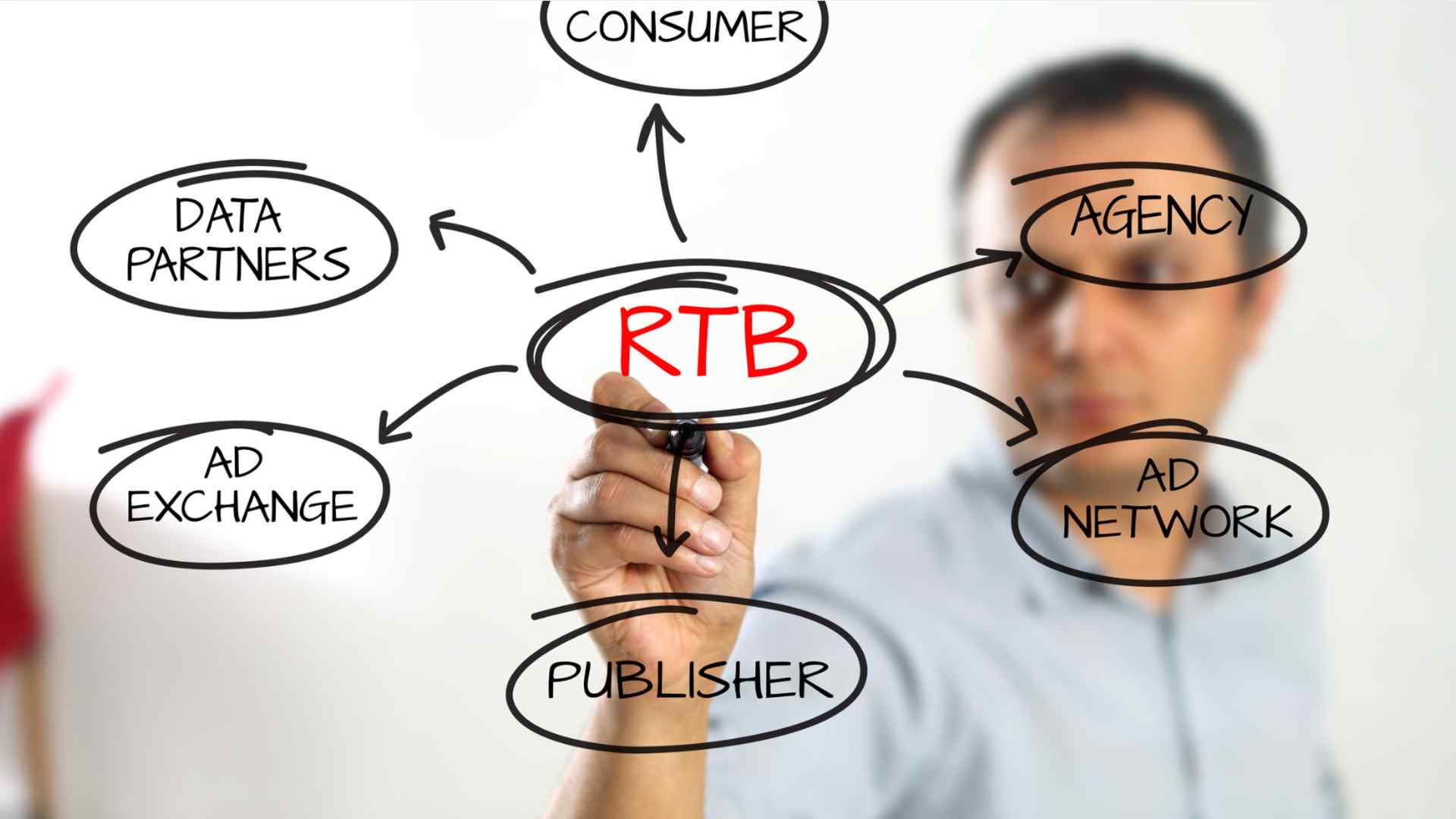What is Real-Time Bidding (RTB) in Ads?

Real-time bidding (RTB) is a method of buying and selling digital advertising inventory through automated auctions that happen in a fraction of a second, typically in a millisecond. It’s a cornerstone of programmatic advertising, enabling advertisers to buy and place ads in real time, reaching users with highly targeted messages the moment they’re online.
RTB takes place across multiple ad exchanges, where advertisers bid on available ad impressions as they become available. This allows for more efficient, data-driven ad campaigns, where every ad impression is an opportunity to connect with a relevant user.
Key Takeaway:
Real-Time Bidding (RTB) is a powerful form of programmatic advertising that allows advertisers to bid on ad impressions in real time across multiple platforms. It helps advertisers reach highly targeted audiences while enabling publishers to maximize revenue by selling ad inventory to the highest bidder. When used strategically with the right tools, RTB improves efficiency, transparency, and ROI in digital advertising.
How Real-Time Bidding Works
When a user visits a website or opens a mobile app, a bid request is triggered. This request includes data like the user’s location, browsing behavior, and device type. The publisher’s supply-side platform (SSP) sends this request to an ad exchange, which connects with multiple demand-side platforms (DSPs). These DSPs represent advertisers and decide in real time whether to place a bid on the ad inventory.
Each advertiser calculates how valuable the impression is based on their ad campaigns, targeting strategy, and bidding cost. A single ad space may receive bids from multiple advertisers across various ad networks, and the highest bid (or winning bid) gets to serve their ad. This automated bidding process happens in milliseconds, allowing businesses to reach users with precision and scale.
For brands leveraging PPC and real-time programmatic ad campaigns, understanding how this system works is crucial for optimizing budgets and targeting the right audience at the right time. As an agency specializing in paid ads, Ready Artwork helps businesses take full advantage of digital ad services through tailored bidding strategies and campaign management.
What Are The Different RTB Options?
RTB comes in several formats, each offering varying levels of control, transparency, and exclusivity for advertisers and publishers. The main RTB options include:
Open Auction (Open RTB)
This is the most common RTB format, where ad inventory is available to all eligible advertisers through a public ad exchange. It offers wide reach but less control over who buys or places ads.
Private Marketplace (PMP)
In this model, selected advertisers are invited to bid on premium ad space before it becomes available in the open auction. It combines the automation of RTB with more control and transparency, making it ideal for brand-sensitive ad campaigns.
Programmatic Direct
With this RTB type, advertisers and publishers strike direct deals, but use programmatic technology to automate the transaction. Unlike typical RTB, there’s no real-time bidding process, prices and placements are pre-negotiated, offering guaranteed inventory with less risk.
Programmatic Guaranteed
Similar to programmatic direct, this option offers fixed pricing and guaranteed ad impressions, but includes additional layers of automation for campaign setup and delivery.
Why Is Bidding Important in Digital Advertising?
Real-time bidding lets advertisers pay only for the number of impressions that meet their specific targeting criteria, making media buying more efficient. It reduces waste and improves return on investment (ROI) by allowing advertisers to reach the right audience at the right time, on the right device.
By using real-time bidding, advertisers can buy ad inventory on a per-impression basis, set maximum bids, and tailor each bid based on the user’s value. This is especially useful for brands that run dynamic, data-driven advertising campaigns and want to gain visibility across multiple publishers and platforms.
RTB vs. Traditional Ad Buying
Traditional ad buying often involves direct negotiations between advertisers and publishers or fixed buys through an ad network. This process lacks the flexibility and precision of RTB. In contrast, using RTB, ads are placed dynamically and competitively across multiple ad exchanges, based on who’s willing to pay the most per impression.
Some platforms also offer programmatic direct and programmatic guaranteed options, which blend the automation of RTB with the control of traditional methods. This gives online publishers and advertisers more ways to manage inventory and campaign performance.
| Feature | Real-Time Bidding (RTB) | Traditional Ad Buying |
| Buying Model | Per-impression, live auction | Bulk buys or guaranteed blocks |
| Speed & Automation | Fully automated, milliseconds | Manual or semi-automated |
| Targeting Granularity | Highly personalized, data-driven | General audience segments |
| Cost Efficiency | Pay only for relevant impressions | Pre-set spends, less flexibility |
| Campaign Control | Real-time adjustments possible | Minimal adjustment after booking |
Benefits for Advertisers and Publishers
Advertisers benefit from:
- Smarter ad buying decisions using real-time data
- Higher-quality placements through multiple ad networks
- Optimized CPMs (cost per thousand impressions)
- Increased control over ad campaigns and audience targeting
- Reduced waste and increased ROI
Publishers benefit from:
- The ability to sell impressions to the highest bidder
- Greater revenue through competition across multiple advertisers
- More efficient use of advertising inventory
- Tools that use supply-side platforms to manage pricing and demand
- Enhanced transparency with fraud detection systems
Challenges of Real-Time Bidding
Although RTB brings efficiency and precision, it also introduces challenges. Ad fraud, for instance, can occur when bots imitate real users. That’s why fraud detection and quality control tools are essential. Additionally, some advertisers may find it complex to manage campaigns across multiple ad exchanges without the right tools.
Still, when managed properly, RTB is a powerful way to buy and place ads, especially for marketers looking to scale digital advertising efficiently.
Conclusion
Real-time bidding works by enabling advertisers and publishers to transact ad inventory on a per-impression basis, in real time. It powers much of today’s digital advertising and offers unmatched targeting, speed, and scale. Whether you’re buying or selling ad space, RTB allows you to make the most of every impression—maximizing performance, revenue, and reach. As bidding allows for smarter decisions and advertisers set bids based on real-time insights, the future of programmatic advertising continues to be shaped by the evolution and efficiency of real-time bidding.


